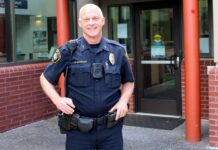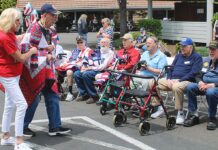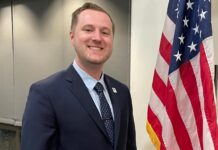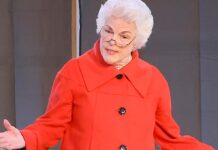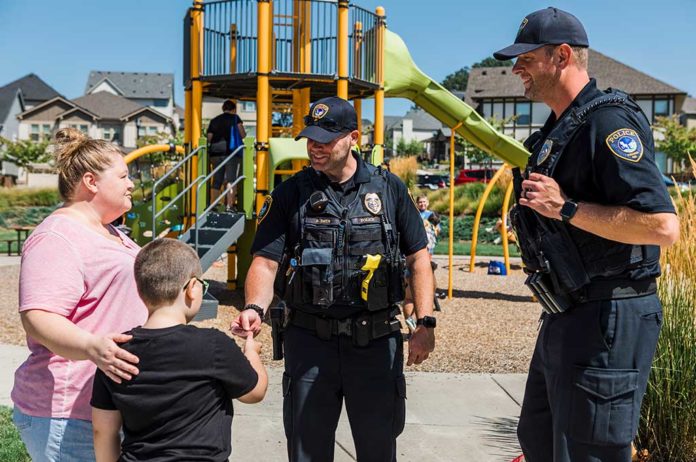
The Tigard-Tualatin School Board is re-examining its relationship with school resource officers, following a wide-ranging investigation into the pros and cons of having armed police roaming school halls.
While the board and Tigard-Tualatin School District do not intend to remove police officers from the district’s schools, their role will be more precisely defined in the future and both students and the public will have a say in how this plays out.
The school board hosted a Nov. 30 public meeting attended by members of both the Tigard and Tualatin city councils that was meant to address the matter. At that meeting, a report was presented detailing the results of a months-long investigation into the role of school resource officers, followed by formal recommendations from the school board.
“The whole evening was a series of really important questions,” said school board chair Maureen Wolf. “The result is certainly not one of stopping the program, but one of how do we stop and improve this program, engage and do it well.”
Among the recommendations that will be implemented during the next few months is the creation of a steering committee tasked with defining the role of school resource officers (SRO), school district oversight of SRO work and implementing additional training for police officers assigned to this role. This will be followed by new contracts between the school district and the Tigard and Tualatin police departments that will cement the new measures in place. Those contracts are tentatively expected to be signed by April 1.
“I see tons of opportunities for the police department as well as the district,” said Services Division Commander Jamey McDonald, who oversees the SRO program for the Tigard Police Department. “I think we’ve enjoyed a long relationship between the district and police department where we’ve had a pretty clear understanding, but we haven’t had that defined structure. We’ll come out of the process with a defined structure and we’ll see some definite changes to the program, but with more intention as well.”
The community wide review of the district’s SRO program was initiated following the widespread protests launched by last June’s police killing of Minneapolis resident George Floyd. The protests resulted in widespread demands for reform of policing practices across the country. The school district’s review of its SRO program was one of many such responses to those calls and was spurred by a request last summer by Tigard High School Black Student Union leader Abdi Mohamoud.
Community Wide Process
In recent months district officials have surveyed students, their families and members of the two communities about their views and perceptions of school resource officers and their role in schools. What they found highlighted the wide discrepancy between the experiences of the white community and those of Black, Indigenous and people of color (BIPOC).
Where many white families expressed trust and a feeling of safety knowing armed police are assigned to local schools, the same is decidedly not true for students and families in the BIPOC community. These differences, said Tara Cooper, one of two facilitators hired by the district to oversee the process, are the result of vastly different lived experiences that these communities have with police in general.
“What they are reflecting on are the historical experiences of families of students of color, where their relationships with police may be more tenuous,” Cooper said. “So, they (SROs) are setting up relationships with the police that may not translate out to the greater community. That’s a perfect example of how larger political things going on really do impact the experiences of our students and families in our schools.”
Even if the district works with officers it trusts, Cooper added, there are long-term implications of that relationship that need to be considered.
“It’s a false sense of trust,” she said.
Another glaring issue, said facilitator John Lenssen, is the lack of clarity around the actual role of SROs. Are they mentors? Teachers? Law enforcement officers? Disciplinarians? When asked, no one seemed to know, least of all staff and students.
“The only group that seemed to have a clear understanding of the role of the student resource officer today were the student resource officers themselves,” Lenssen said.
Beyond that, it was “a little murky,” Cooper added.
“The school resource officer program has never been explained in any formal way as to why they are there,” she said. “They come in a lot of gear, but are they here to protect? Or just hang out with students? The students were unsure what to expect.”
As a result, individual school resource officers tend be viewed more as individuals than as representatives of a cohesive program. The lack of a formal evaluation or complaint process within the school district only exacerbates this dynamic.
“There has been amazing feedback for individuals, but there is no routine or formal process for evaluation of programs where participants could speak to those individuals and actions,” Cooper said. “
Those are the types of issues the new steering committee aims to address.
“It really comes back to the work, developing a really clear work plan with a defined purpose and measured outcomes,” said Amber Fields, the district’s Director of Secondary Education, College and Career. “So much of what we heard about was relationships and how this can be a preventative partnership. If that’s what is truly valued, we should have a solid structure and an intentionality around that.”

